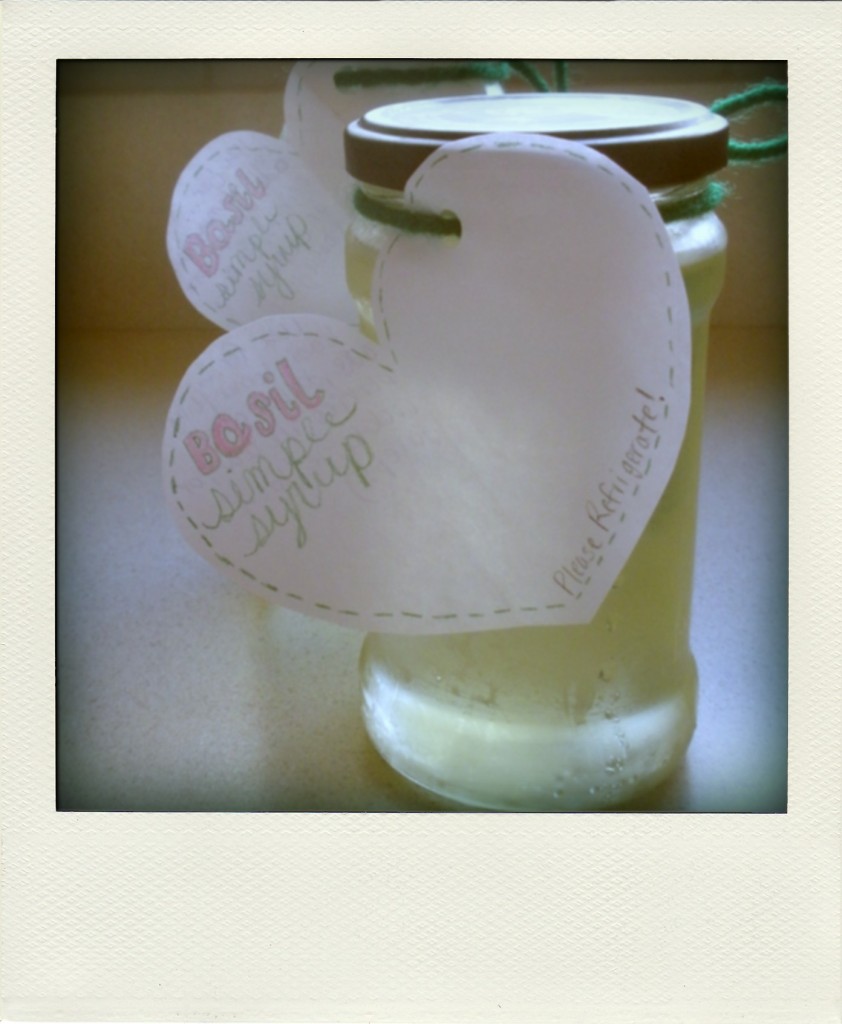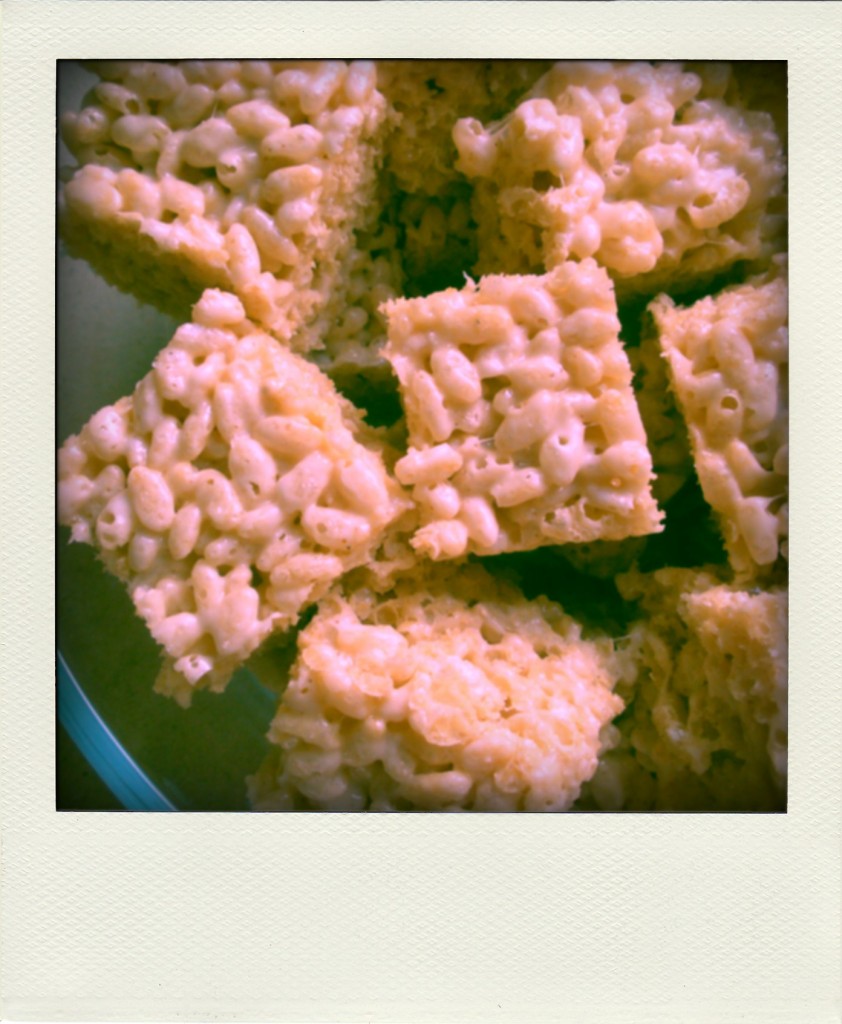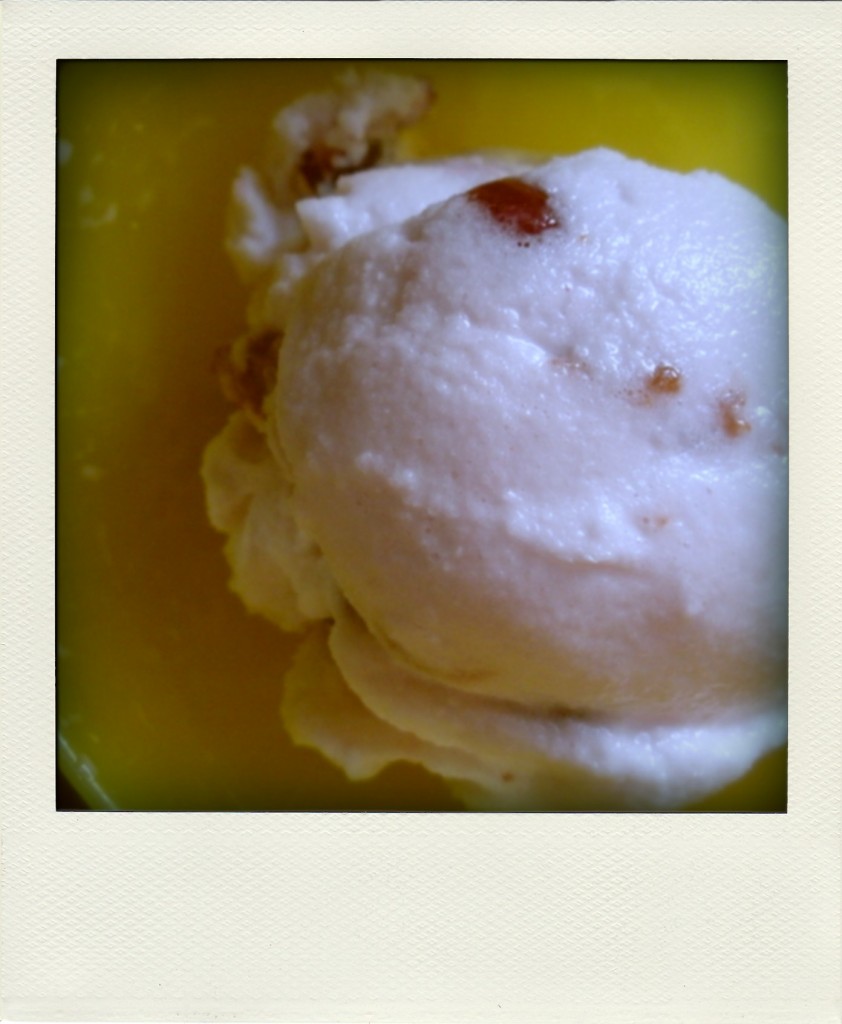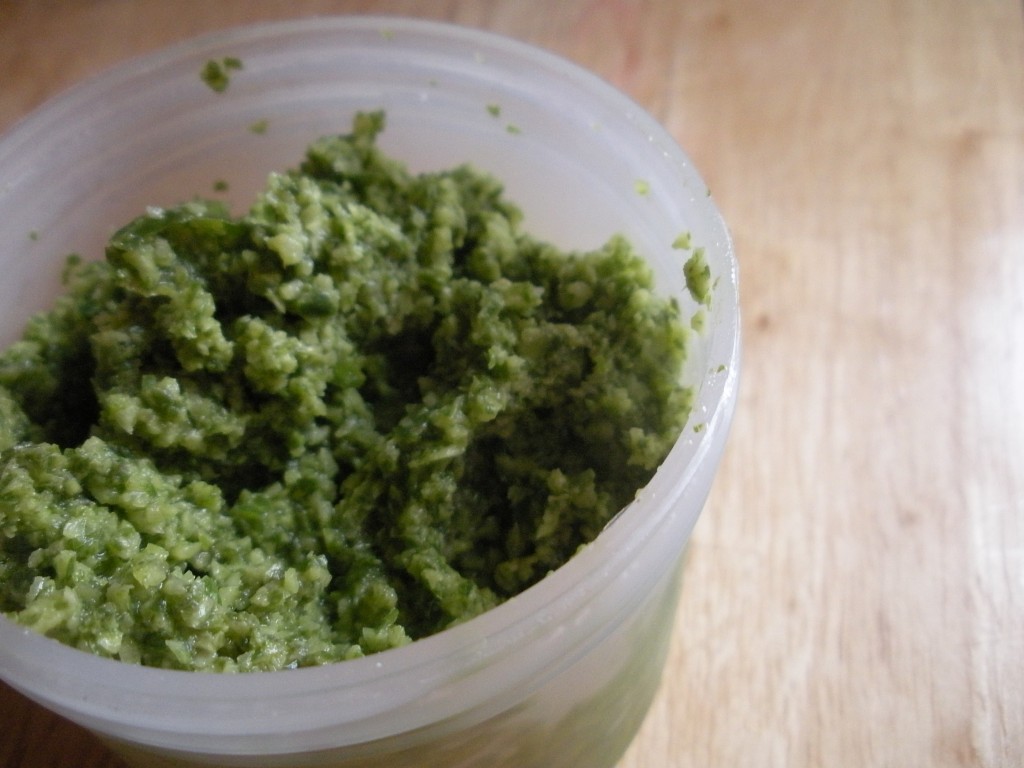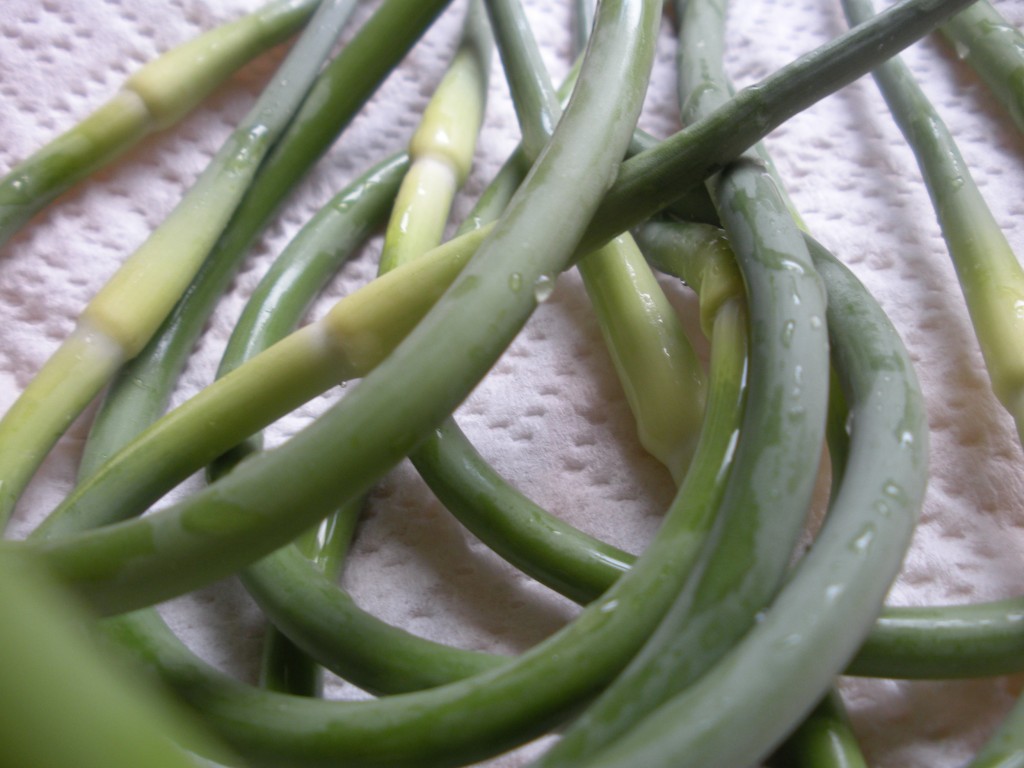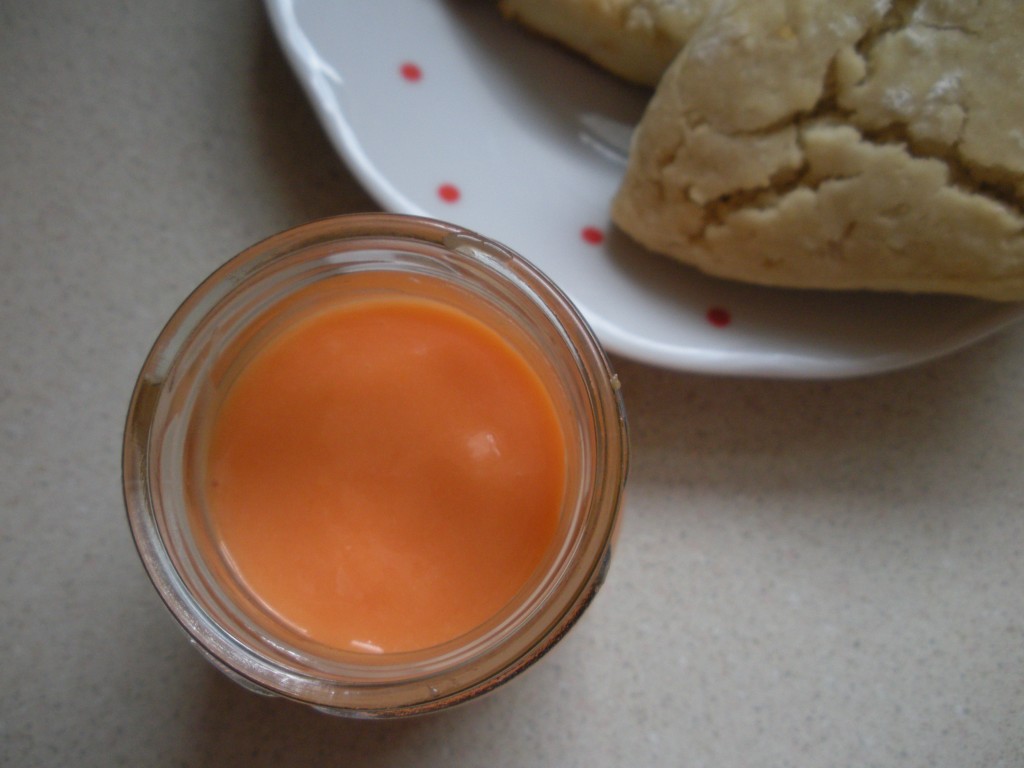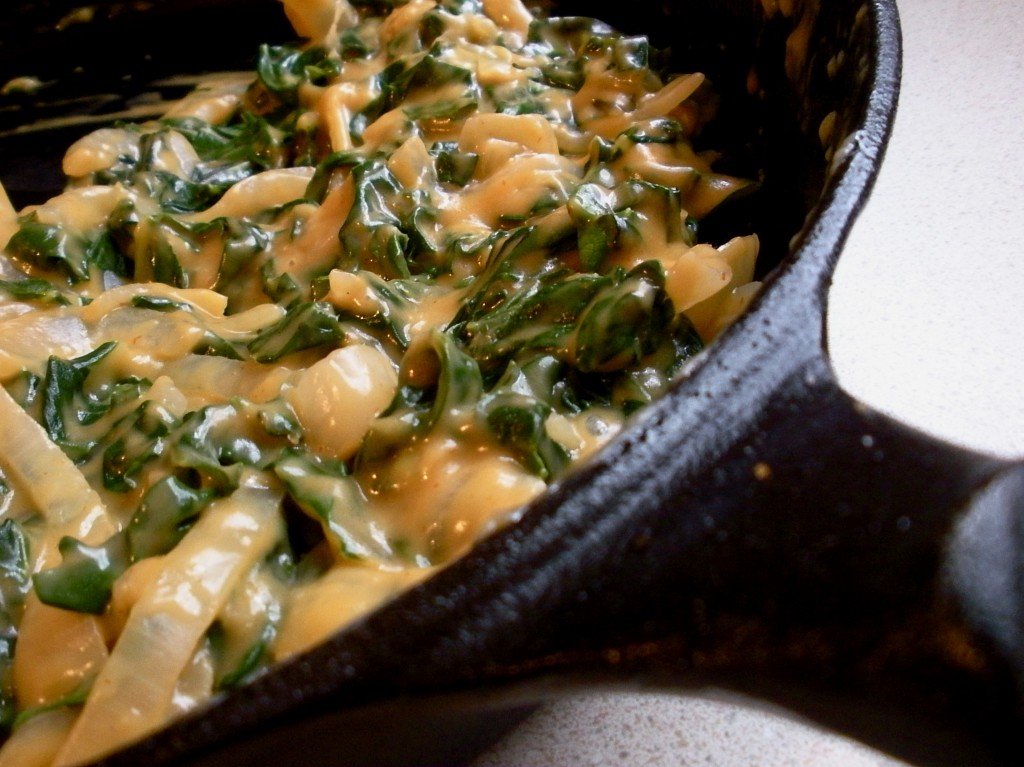
I like weird foods. I’ve said this before. I also like making food that is good and good for lots of folks, regardless of dietary choices or restrictions. Obviously, this one isn’t good for my nut-allergic peeps, but it doesn’t mean I love them any less.
I would rather we didn’t call this stuff “cheese.” I get it, but when you tell a hardcore animal-product loving person that you made them cheese out of nuts, you’re likely to get a less than favorable response. It’s a magnificent fat-laden creation that could be used like you use cheese. The end.
The recipe is from VegNews. That said, I had to make some adjustments to the recipe to get it to work like it is supposed to. I had the same problem that some of the commenters had: it stayed the consistency of ricotta and didn’t firm up in the fridge. Luckily, I have a fix. The recipe is below, with my adaptations.
Consider it a starting point. I had some ramp pesto leftover in the fridge (most obnoxious foodie thing ever said, I know) and layered that into one of my wheels for a little added awesome. I made three small wheels in some little cake pans that I have, but ramekins or small shallow bowls would work too. I wouldn’t say the end result is exactly what I was looking for, but it was pretty good. Next time, I might try this recipe.
Cashew Cheese
(adapted from this VegNews recipe)
This definitely takes a little time, but it is quite low-effort. However, I felt pretty accomplished when it was all said and done and I had made my own fake cheese.
2 cups raw cashews, soaked 12 to 14 hours
¾ teaspoon New Chapter Probiotics All-Flora powder, dissolved in 1 cup warm water
2 tablespoons nutritional yeast
½ tablespoon onion powder
1 teaspoon salt
1. Drain soaking water from cashews and blend with prepared probiotics until smooth. Transfer to a medium glass bowl and allow to sit, covered with towel in warm place for 14 to 16 hours to culture.
2. Stir nutritional yeast, onion powder, and 1 teaspoon salt, into the cultured cashews.
3. Line small shallow bowls/ramekins with foil, so that the foil hangs over the edge. I used three mini cake pans. Lightly grease the foil.
4. If you’d like plain cheese, just pour it in the bowls/ramekins, smooth the surface, cover with foil, and place in the freezer. If you’d like herbed cheese, now is your time to shine. I made one with salt/cracked pepper, one with smoked paprika, and one with ramp pesto. To make them nice and pretty, layer your add-ons into the cheese as you pour it into the pans: a little salt and cracked pepper first, a layer of cheese, and another layer of salt and cracked pepper.
5. Freeze for at least 24 hrs. Remove to fridge and allow to thaw. For me, this remedied the texture issue with this recipe. I wasn’t serving the cheese frozen, but freezing and thawing it made it set, so that it held it’s shape better when un-molded. The end texture is something like fresh goat cheese.
6. To un-mold the cheese, place the bowl or ramekin upside down on the serving tray. Remove the ramekin then carefully peel back the foil.
